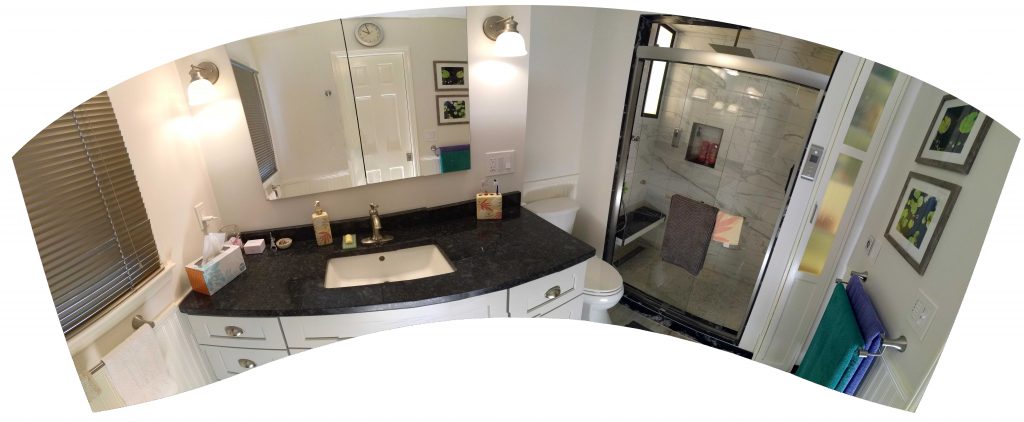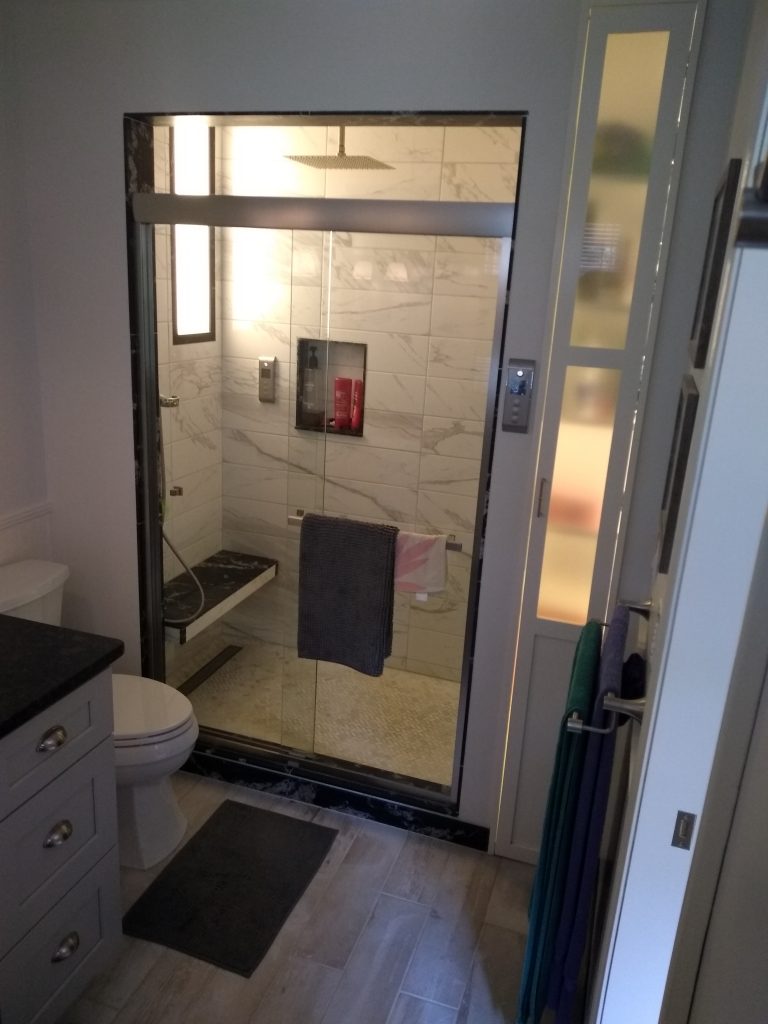
Our shower and adjacent lighted closet with glass panel door
Being from the late 60s and early 70s, most of the homes in this neighborhood do not have very large bathrooms. This bathroom, attached to our main bedroom, would be considered small in any recently built American home, even if it was a secondary bathroom. To achieve the luxury we desired, space utilization and design was even more critical.
The highlight of this renovation is the roomy shower with Kohler DTV® Digital thermostatic temperature control system. The digital control panels, in and outside of the shower, set temperature and shower head selection between the 12” overhead rain-head and the wall mounted hand shower head.
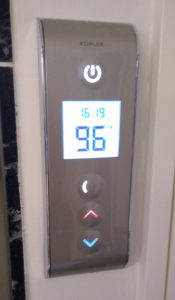
Kohler DTV® Digital Control Panel
Regardless of the manufacturer or the technology, we cannot overstate the benefits of a thermostatically controlled shower. If someone starts a wash load, dishwasher or simply brushes their teeth elsewhere in the house, a thermostatically controlled shower will compensate for the change, keeping you comfortable – no sudden streams of scalding or freezing water!
The details are what really make this shower.

The Large RGBW (red, green, blue, white) LED light panel with granite trim provides plenty of soft light.
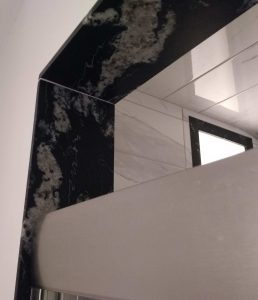
Our Shower Walls & Trim – The trim started as 24” x 12” brushed granite slabs that were cut into strips of various sizes to utilize as the trim. The wall tiles are a simple, somewhat larger porcelain with strong veins of a marble like design.
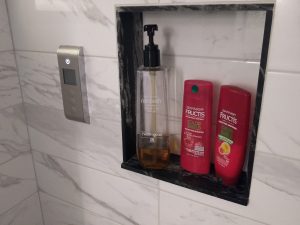
The shower features two in-wall cubbies, large enough for most shampoos, body cleansers and other bathing accessories. The Kohler DTV Control Panels allow you to dial in a perfect temperature from inside or outside the shower.
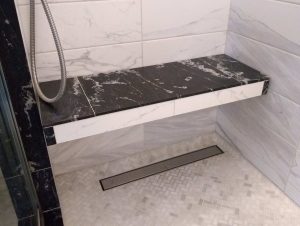
The floating bench is a great place to take a break or use as a stable leaning spot for shaving. It also makes washing the dogs a lot easier.
Below the bench is a stainless-steel linear drain. Drains are not exciting but, in this design, the narrow strip layout makes for a good look.
The floor, built on top of a cement pre-slope and liner, is tiled with a marble mosaic. The small tiles provide a great look and also excellent traction to prevent any slipping or sliding.

The width of the room was just a bit more than was really needed for the shower so to better utilize the space, a narrow lighted closet was put at the end. It’s a perfect space for all the stuff that should be nearby but that doesn’t fit the medicine cabinet and doesn’t need to be in a drawer.
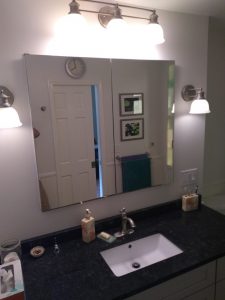
Speaking of drawers, the six-drawer vanity is topped with a dark slab of granite and matching low-profile back-splash.
The inside of this shower is about 30” x 50” which is not enormous but there is plenty of space to avoid banging your elbows.
Huge showers have a great look but many people do not realize until they get in that once you go beyond about 4 feet in each direction, it can become a drafty unpleasant space. We usually shower alone so anything more than about 4 feet x 4 feet would really be a waste.
There are several electrical outlets in this bathroom and a built-in LED dusk actuated nightlight.
It really was a coincidence but most of the “name brand” fixtures in this bathroom are Kohler. Selection started with the faucet in an earlier bathroom. We prefer single handle faucets for their ease of use but we didn’t want hardware that was too modern and we wanted everything to be a brushed silver which gave us options in brushed nickel or brushed stainless steel. The fun started after selecting the Kohler Elliston faucets. Some came with matching toilet roll holders but we then had to shop high and low to find other hardware that matched. It required diligence and patience.
The last thing to note about all the bathrooms I’ve done is ventilation. Typical bathroom exhaust fans make far too much noise – I cannot stand that whirring right above my head? The first thing to do is place the fan farther away, just a few feet of duct work between the vent opening and an in-line fan will significantly reduce the noise. While it was not always a code requirement, it’s also important to have the exhaust go outside and not just vent into the attic or whatever cavity is closest. Venting outside has everything to do with moisture and condensation control. Excess moisture in the air is great for growing mildew so you don’t want all that humidity collecting, especially in the attic where wintertime cold will cause it to condense. Selecting the vent type is mostly a matter of convenience and appearance. Roof top vents and vents in a side wall are the most common but I have used the side wall whenever possible as there is virtually no chance of any future rain leaks.
